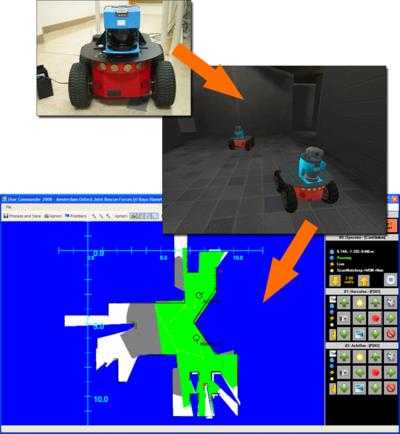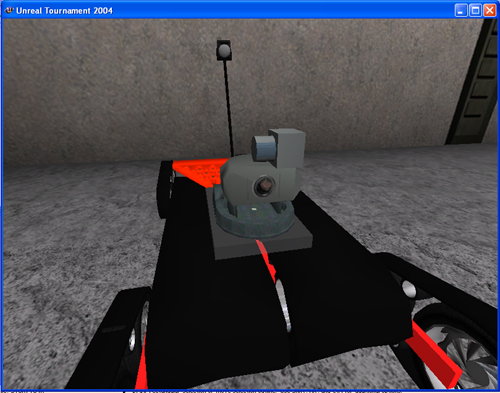Robotic Search and Rescue
 Overview
Overview
Recent advances in robotics and computer science mean that it is now possible to use teams of robots for many real-world applications. Two very important (and closely-linked) areas of application are robotic exploration and robotic search-and-rescue. Robotic exploration involves exploration of locations that are hazardous or inaccessible to humans (such as mine fields, contaminated zones, other planets, or underwater environments). Robotic search and rescue is useful since robots may be deployed in dangerous environments without putting human responders at risk.
Initial uses of rescue robots, such as during rescue efforts following the collapse of the World Trade Centre in New York in 2001, have highlighted the fact that many improvements are still required for teams of robots to provide extensive assistance in search and rescue tasks. While much effort is going into development of more robust and mobile robot platforms, it is also necessary to develop practical user interfaces for humans to control the robots. Additionally, efficient coordination of a multi-robot team requires advanced methods for communication and cooperation.
We are interested in developing advanced high-level techniques to help a team of robots efficiently map an environment and report on their findings. This requires integration of advances in a wide variety of fields (see research goals, below). Much of our simulation work involves the USARSim framework. Based on a commercial game engine, it uses state of the art techniques for simulating physics and rendering graphics. Furthermore it is fully configurable, allowing for independent development of simulated robot models, sensors and environments.
In a joint effort with the University of Amsterdam, we compete in RoboCup's Virtual Robots competition. Our team is called the Joint Rescue Forces.
Fields of research
The task of making a team of robots explore and map an environment while looking for victims requires integration of advances in a number of very interesting fields of research. These include:
- Navigation
- Mapping
- Victim Detection
- Exploration
- Development of a Practical Human-Robot Interface
- Communication
- Cooperation
We also hope to apply machine learning techniques to intelligent multi-robot exploration.
Projects
A wide variety of student projects are available that involve our simulated robotic search-and-rescue team. Three projects of particular interest at the moment include:
Links
- RoboCup is an international project to promote development of machine learning and robotics.
- RoboCup Rescue is the branch of RoboCup devoted to rescue robotics.
- The Virtual Robots competition is the one we compete in.
- The Joint Rescue Forces is the name of our team (together with the University of Amsterdam).
Contact
For more information about the Joint Rescue Forces or if you are interested in doing a project in this direction, please get in touch with Julian or Stephen.

